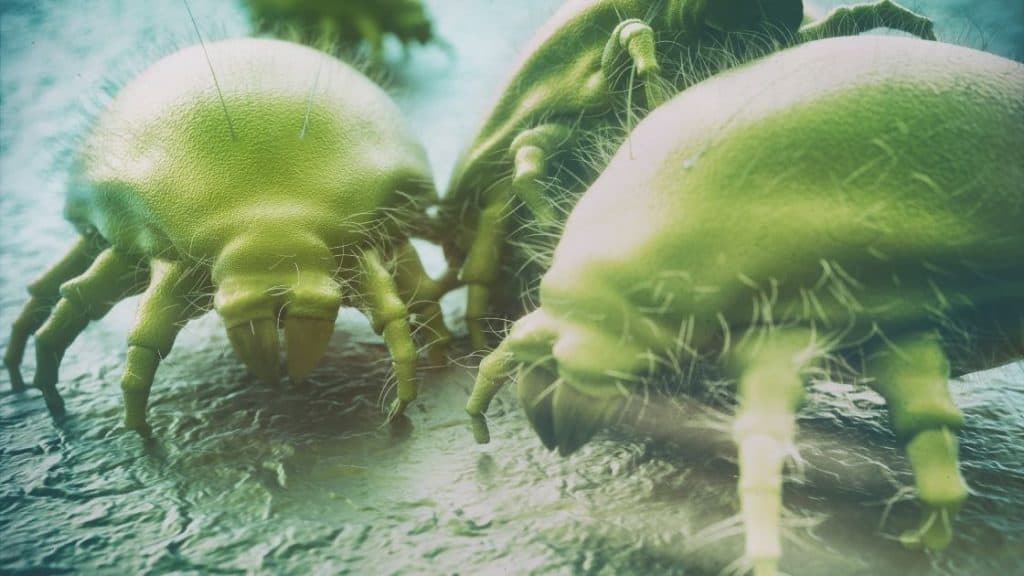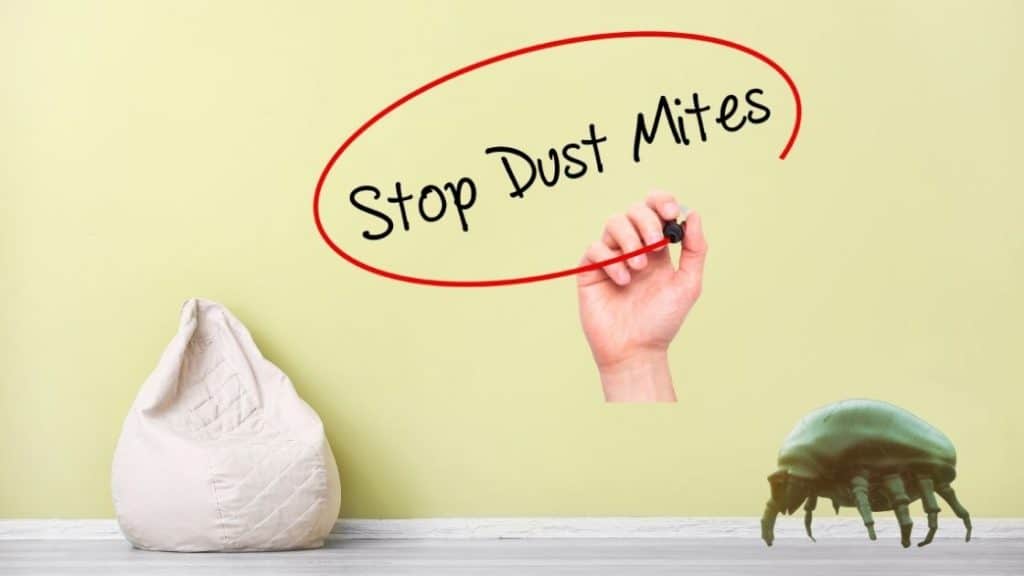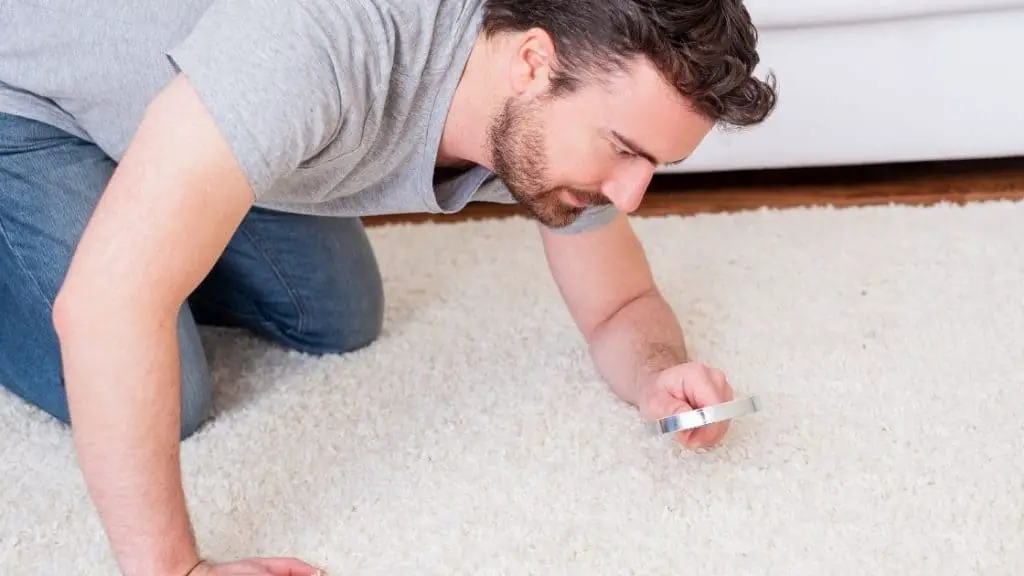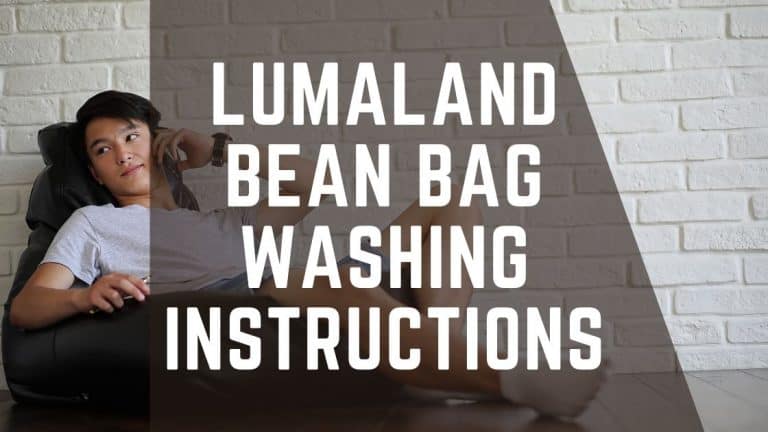Bean Bags and Dust Mites – Everything You Need to Know
Last month one of my friends had a dust mites infection. When she observes more, she could find that dust mites got into her favorite bean bag, which was the reason for her illness.
Dust mites can get into bean bags like any other household furniture, which can cause several allergies for the people who interact with them.
Dust mites are microscopic household pests as small as a grain of sand, yet they are responsible for over 70% of breathing problems and breathing-related allergies of people who come in contact with them.
They are considered common household pests as we can find them in almost every type of house where there are humans.
Bean bags are a perfect place for these tiny pests who feed on our skin cells; as we spend many hours and shed our dead skin cells on them all that time, we are relaxing on our bean bags.
These dust mites aren’t a threat to be taken lightly. This article is written with that fact in mind, and it aims to arm you with the knowledge you can use to face them if you ever needed to.

Table of Contents
- What are Dust Mites?
- Are Dust Mites Dangerous?
- Where do Dust Mites come from?
- Identifying an Infestation
- Allergies and Rashes Because of the Dust Mite
- Preventing Infestations of Dust Mites
- Dealing with an Infestation of Dust Mites on a Bean Bag
- It’s Not Just your Bean Bag
What are Dust Mites?
As said earlier, dust mites are microscopic pests that are mostly invisible to the naked human eye. They have made everything inside the house, from carpets, rugs, and curtains to mattresses and bean bags their home.
In other words, if you have anything with fabric in your house, you have a chance of having dust mites in your place of living. They live in large numbers, breed, and die in these places where they have made their home.
Being small creatures, they have a short life span of 80 days and produce more than a thousand waste particles in that near three months of life. These wastes are the reason you might get allergies while you are around them. They breed every week and lay about 35 new eggs each time, making them one of the fast-spreading household pests we know of.
Bean bags are among the favorite places of these microscopic spider-like creatures as the fillings of bean bags such as memory foam have empty spaces between them, and they can live in them for a long time without being noticed. Bean bags are also with constant food supply for them as we constantly sit on them and shed our dead skin while relaxing there.
These creatures live on our human skin’s dry flakes, which we shed all the time to the point it is estimated we lose nearly one million tiny pieces of skin every day in this manner.

Are Dust Mites Dangerous?
Dust might do not harm us intentionally as these creatures do not sting or bite us even though their main course of the meal is our skin. This is because they usually feed on the dead skin cells and other body fragments that fall from the body rather than snitching them from the source itself.
Saying they don’t harm us intentionally doesn’t mean that they don’t harm us at all. Dust mists live in large groups, and these groups produce large amounts of waste each passing hour.
These waste and dust mites themselves become the cause trigger many allergic reactions from hay fever to asthma which could lead to many dangerous side effects.
Where do Dust Mites come from?
Most parasites come to our houses from the outside with our pets, kids, and ourselves, but the dust mites aren’t like most other parasites as they can’t live outdoors for a long time. They need a temperature around 21oC yet dark space as direct sunlight can kill them.
They also need relative air humidity, which varies between 50% to 70%, as they can’t drink water like most animals do but absorb it directly from the surrounding air.
Dust mites always come to your house from another indoor place which could vary from other people’s houses and your workplace to cinema theatres, restaurants, and seats of buses and trains you take. They would attach themselves to your clothes and luggage and come to your house with you.
On the other hand, did you know that a single gram of dust you would carry home unnoticeably is with the potential of having an average of 500 dust mites in them?
Identifying an Infestation
The best indicator, which alarms you of a dust mite infestation is your own body. As said earlier, dust mites are microscopic beings. You can’t hope to see them with your necked eye unless you look for them intentionally and very carefully, yet your body will show various symptoms as reactions to their presence.
The most noticeable one would be finding yourself sneezing and wheezing every time you sat on your bean bag to have a day’s rest or when you’re cleaning it or the surrounding where it is at.
These frustrating sneezing and wheezing will continue throughout the day, but they won’t be the only symptoms your body will use to warn about these nasty creatures.
Allergies and Rashes Because of the Dust Mite
The most common allergy symptoms you will have because of dust mites are as below;
- Uncontrollable sneezing
- Runny noses, which will lead to the production of thick mucus
- Difficulties in breathing
- Red and itchy eyes.
- Rashes on your skin
You might get rashes on your skin if they have invaded your bean bag on which you spent hours while resting or doing your work. We simply call these dust mite rashes.
With a dust mite rash, you will mainly feel itchiness and swelling on the skin of your neck and under your armpits which will be followed by redness.
We all have different bodies that react differently with the environment we are in, so these mentioned symptoms and rashes could vary from low risk to severe depending on your own body’s sensitivity when it comes to dust mites. You are advised to check with your doctor instead of attempting any treatment by yourself.
Preventing Infestations of Dust Mites
Preventing is always better than curing, and you only have to do two things to prevent dust mites from taking over your bean bag or any other furniture in the house, for that matter. Just “be clean” and “keep clean”.
Never jump on your bean bag as soon as you come into the house from another house or by using public transportation. First, have a wash or at least a cloth change and then have the rest you needed. Having a clean surrounding also helps as a neat surrounding means a less hospitable surrounding for our unwelcome little friends.
Make it a routine that you wash your bean bag at least once every two months and vacuum it at least once in two days.

Dealing with an Infestation of Dust Mites on a Bean Bag
The best cure for any infestation is preventing that infestation from ever happening, and the second one would be throwing out what is infected. Yet, not all factors are always in our control all the time, and an infestation of dust mites could still happen no matter how hard we try to prevent that from happening.
At the same time, throwing out our beloved bean bag would be the last thing anyone of us wants to do too. So here are some ideas which you could use to deal with an infestation of dust mites if you were ever unfortunate to find yourself in one.
Wash the Bean Bag
Remove your bean bag’s cover and wash it. Don’t forget to clean its filters too. Remember to read the tags and instructions that come with your bean bag to understand all you should do and avoid doing when cleaning your bean bag.
Clean the Surrounding
Washing your bean bag will be useless if you didn’t clean the surrounding which you keep the bean bag. Ensure that you clean all the dust in the surrounding before you put the bag in its rightful place again, and don’t forget to keep it clean if you wish to prevent any future infestations.
Read our guide on How to Clean and Wash a Bean Bag.
Lower the Humidity
Dust mites need to have water in the air to survive as they absorb water directly from the air rather than drinking it. So, more water in the air means more dust mites in your bean bag.
You can do many things to reduce the humidity in your house, from keeping the lids of your cream, lotion, and moisturizer jars closed when you are not using them to making sure you dry the bathrooms, laundry rooms, and showers after using them.
Even things like keeping bowls of water for your pet in the same room as your bean bag could increase the surrounding humidity.
Reduce their Reasons to Make Breeding Grounds
What dust mites look for after water is food. Looking for food is why they tend to make their nests in areas with a high count of skin cells available. This is why they are so fond of places like bean bags and beds where you spend hours resting or working.
By spending hours in these places, you provide them with both water and food. You provide water through your sweat and food through your skin cells. You can’t truly control any of them, but you can ensure those things won’t accumulate after each use.
Put your bean bag under a fan to dry if it is covered in your sweat, and vacuum it each day to ensure it won’t contaminate dust and skin cells.
And as said earlier, wash your bean bag as often as possible.
Remove your Carpets
Removing carpets is an essential tip for you if you are already with dust mites. Fibre mats are also a breeding ground for dust mites, and a rug under your bean bag would be an endless supply of extra space for them to live in hiding.
Even if you clean your bean bag and put it back, dust mites left in the carpet will survive clime back into the now-empty bean bag, and soon it will be infested just as before. So, remove your carpet for few weeks and put your well-cleaned bean bag on a hard floor.
Dust mites can’t survive on hard floors for a long.
Don’t forget to clean your carpet before you put it back.
Use Cleaned Rugs
If you have a rug in your living room, bedroom, or home office, make sure that it is kept well cleaned. Rugs, just like carpets, tend to accumulate dust and dirt, which welcomes dust mites to a home. Always remember to flip your rug and vacuum the backside of the mat too.
Dusting
I don’t think I have to explain more why dusting is so vital at this point of the article, yet here are few things to keep in mind when you continue your routine of dusting your furniture.
Never dust the place just before you are about to use it. If you do so, it will only increase your risk of allergies.
Always dust during the daytime and make sure the place which you are dusting gets plenty of sunlight while you are doing it. As we discussed earlier, sunlight kills dust mites.
Running a vacuum cleaner just after dusting will give you much better results.
Keep the Pets Away From Your Bean Bag
Our pets are also members of our family, and we always do our best to provide them with the freedom they deserve. But this doesn’t mean you shouldn’t say no when you should. Climbing onto your bean bag is one of those actions which you should stop the moment that happens.
Pets with their fur and paws, which touch everything everywhere in the backyard, are not a good combination if you wish to keep your bean bag free from dust mites or if you are trying to end a dust mite infestation has already happened.
You should also wash your pets regularly as a daily bath could do wonders when it comes to preventing dust particles from gathering on their fur, which they would spread throughout the house and provide a living ground for dust mites.
Remove Excess on Your Bean Bag
Don’t keep outrageous things like sheets, pillows, and blankets on the bean bag when you are not using it as they would provide extra space of living for dust mites and methods of transportation from your bean bag to other places such as your bed or sofa.
You must clean these excesses frequently, just like you would do with your bean bag.
Change Places
Don’t keep your bean bag at the same spot for a long time. Make it a routine that you move it at least once a month. It will give a fresh look to your living room, work office, or bedroom and be helpful in the process of fighting off dust mites.

It’s Not Just your Bean Bag
One significant fact you should keep in mind is that infection of dust mites on your bean bag will never be limited to your bean bag alone. If you have dust mites in or on your bean bag, that surely means you have dust mites in other places of the house too.
The most common targets are places like your bed and couch where you spend lots of time and thus provide them with food and water. They need to survive in the form of your skin cells and sweat.
Cleaning your bean bag alone won’t be much of a help if dust mite infection has already taken over the other parts of the house as well. In such a case, the best solution will be to clean the whole house and then continue to do so for few weeks till you’re sure it is free from dust mites.
Use hot water to wash the pillows, bed linens, and any other safe to do so and put them under the sun to dry. But keep in mind that hot water could damage certain fabrics just like they kill dust mites. Always check whether it is safe to use hot water on your bean bag fabrics before using hot water on them.
You could also use dust mite-proof covers on your pillows, mattress, etc., which will prevent dust mites from getting in or starve the ones already in those places to death since these covers cut off their food supply entirely.
However, you must not stop your routing of vacuuming and dusting simply because the dust mites have gone from the house but continue it as it would prevent them from ever coming back.
It’s important to understand that you should take action to stop a dust mite infestation the moment you spotted or felt such infestation is happening in your household as such could lead to many severe health problems as time pass.
You should also always keep in mind that preventing is better than the cure so, try your best to minimize any way these tiny pests could get into your house. The knowledge you gathered through this article will arm you with all you need to know to face that fight and win.





